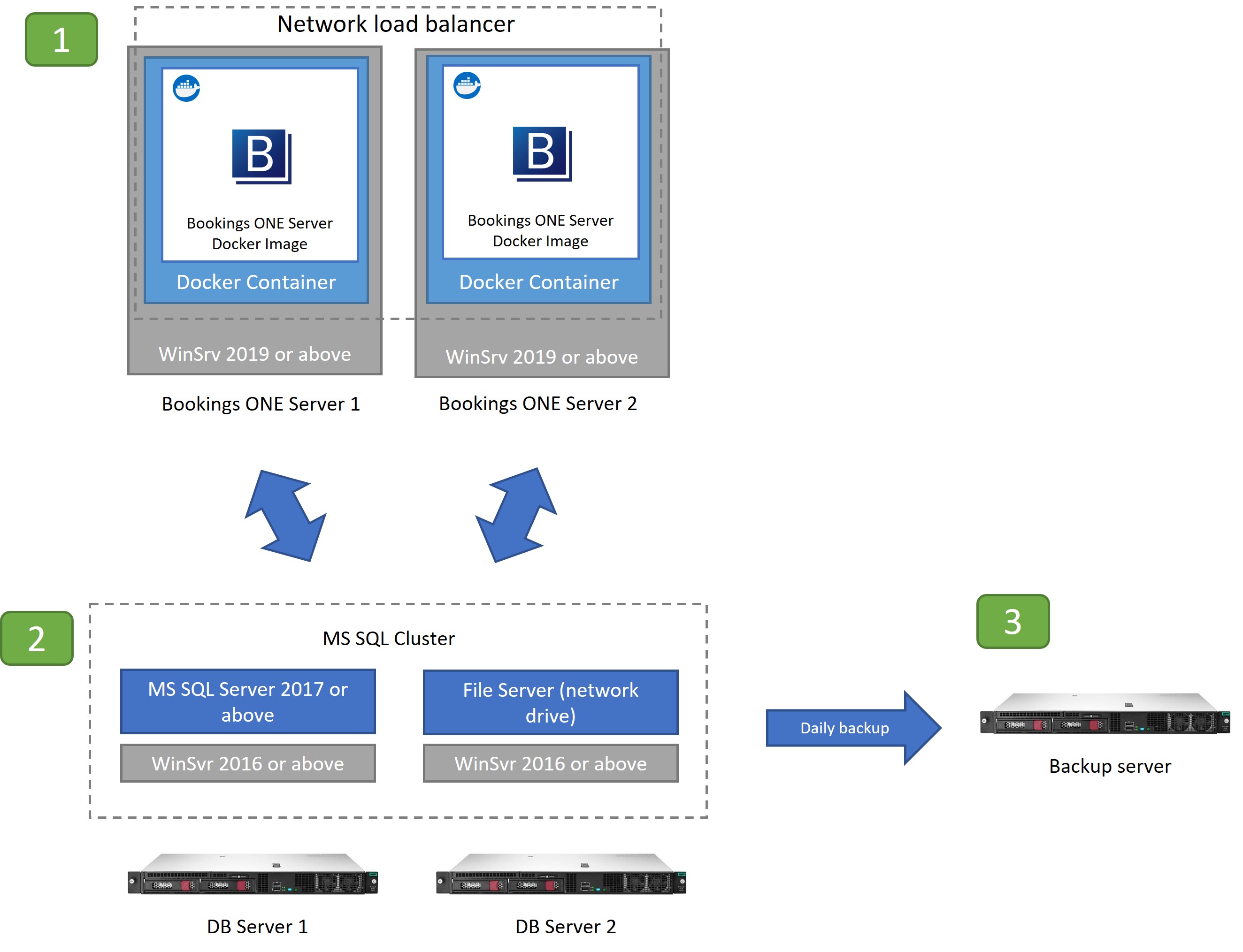High availability server farm
High availability server farm are difficult to setup & config, it need to setup the windows cluster / load balancer / and the network share drive. If you are not have deep knowledge in windows server environment, we suggest you to looking for a System Integrator or direct contact us for the system consultation
If you are using on-premise solution and have the high availability requirement, windows server farm can fulfill the case.
x
Architecture diagram

On-premise Windows server infrastructure
1. Application Server
Application server is multiple physical servers which hosts the Bookings ONE docker image.
Application server will form a server group by the window server network load balancer (NLB). NLB will arrange the http / https request to different servers to share the system loading and provide scalability and resilience to the system.
Scalability:
By adding the physical servers (nodes) into the IIS load balancer network, multiple servers can share the workload of the system by each node to increase the total system performance.
Resilience:
IIS load balancer network provides high availability and protection from disasters whenever any physical server failed.
2. MS SQL Cluster / File Server Cluster
SQL Server clustering / File cluster is a collection of two or more physical servers, connected via a LAN, each of which hosts a SQL server instance and have the same access to shared storage.
Scalability:
By adding the physical servers (nodes) into the cluster, multiple servers can share the workload of the system by each node to increase the total system performance.
Resilience:
Clustering SQL servers provide high availability and protection from disasters whenever a server hosting the SQL Server instance fails.
3. Backup Server
Backup server is used for storing the daily backup of data in SQL database, user uploaded files and server logging.
Since it is only for the backup purpose and not related to the main operation flow of the Bookings ONE, we suggest that 1 backup server is enough in view of cost efficiency.
The backup data are the key items for a server. To reduce the opportunity of data loss cause by hardware failure, we suggest that the server should has RAID controller and support hot swapping. By configuration, the system can be set to be RAID-5, which can support both data resilience and scalability in hardware level. And hot swapping will keep the recovery procedure simple by replacing the failure hard disk from the system without any down time.